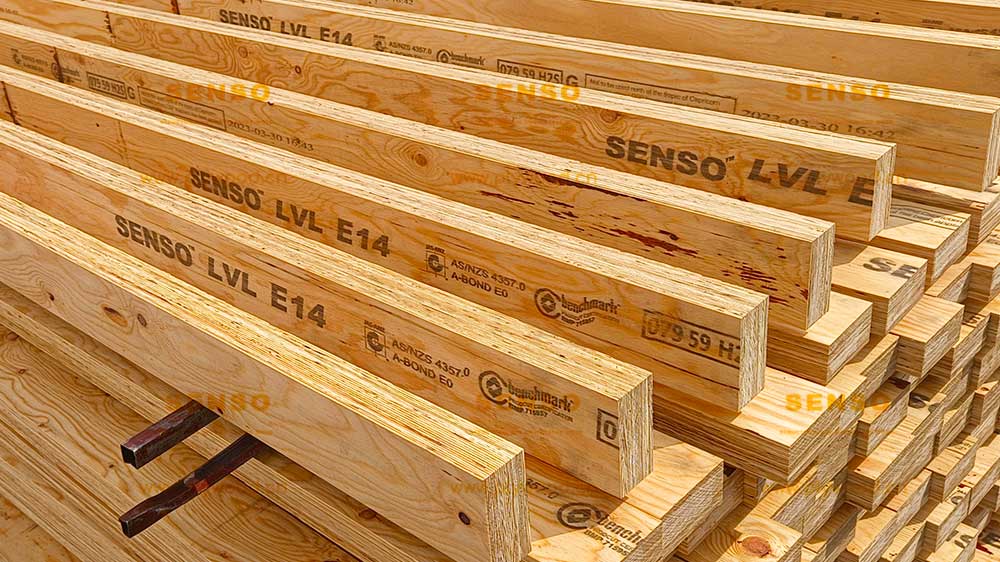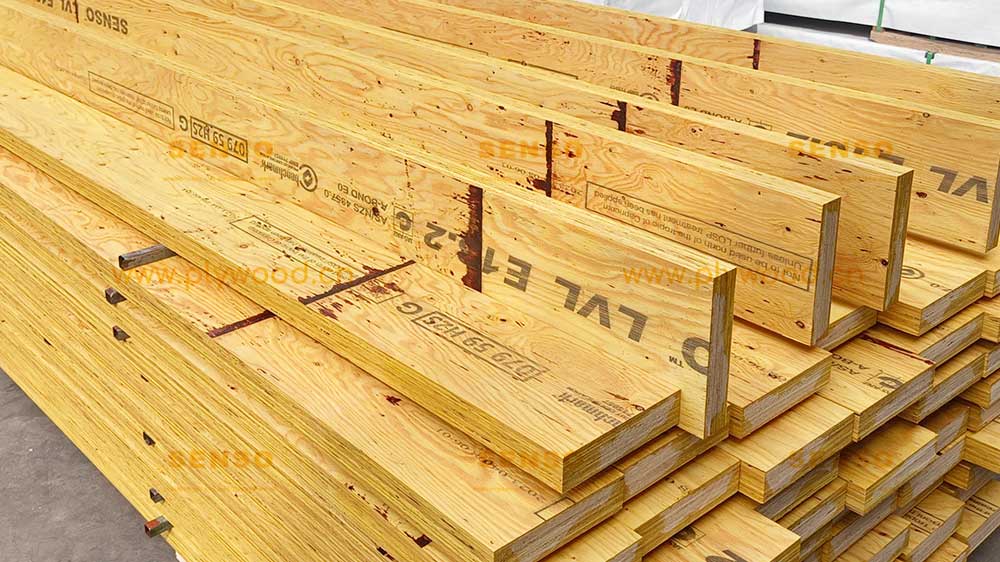What is a Beam Wood Ceiling?
A beam wood ceiling is an architectural feature that uses exposed wood beams to enhance the aesthetic and structural appeal of a room. These ceilings often feature large, horizontal wooden beams that run across the length or width of a space, creating a striking visual effect. Beam wood ceilings are popular in various architectural styles, from rustic and traditional to modern and contemporary. They can be constructed using different types of wood, including solid timber, engineered wood like LVL (Laminated Veneer Lumber), and even faux wood beams for a cost-effective alternative.
The appeal of beam wood ceilings lies in their ability to add warmth, texture, and a sense of history to a room. Whether used in a living room, dining area, or bedroom, these ceilings can transform an ordinary space into an extraordinary one. The use of natural materials like wood creates a connection to nature, promoting a sense of calm and comfort.
Wood beams, often made from timber or LVL timber, provide structural support and aesthetic value. In traditional homes, these beams were essential for supporting the roof. Today, while their structural necessity may have diminished with modern building techniques, their aesthetic appeal remains undiminished. Faux wood beams offer a lightweight and affordable alternative, mimicking the look of real wood without the weight or cost.
The Beauty of Beam Wood Ceilings
Enhancing Aesthetic Appeal
Beam wood ceilings are renowned for their ability to elevate the aesthetic appeal of any room. The natural grain and texture of wood add a layer of visual interest that is both timeless and versatile. Whether your home features a rustic, farmhouse style or a sleek, modern design, beam wood ceilings can be adapted to fit seamlessly.
Incorporating beam wood ceilings into your home can create a focal point in any room. The beams draw the eye upward, making ceilings appear higher and spaces feel larger. This architectural feature can also highlight other design elements in the room, such as a stone fireplace, large windows, or intricate wall finishes.
Structural and Design Versatility
Beam wood ceilings are not only beautiful but also versatile in terms of design and structure. They can be used in various configurations to suit different architectural styles and personal preferences. Here are some popular designs:
- Exposed Beams:This design leaves the beams fully visible, showcasing their natural beauty. It’s ideal for rustic, farmhouse, or industrial interiors.
- Box Beams:These hollow beams are used to create the illusion of solid wood beams. They are lighter and easier to install, making them a practical choice for many homeowners.
- Painted Beams:For a more contemporary look, wood beams can be painted to match or contrast with the ceiling and walls. This approach works well in modern or eclectic spaces.
Materials and Installation
Solid Wood Beams
Solid wood beams are the traditional choice for beam wood ceilings. They are typically made from hardwoods like oak, maple, or walnut, known for their durability and beautiful grain patterns. Solid wood beams are heavy and require proper structural support, which should be considered during the design and installation process.
LVL Timber
LVL (Laminated Veneer Lumber) is an engineered wood product that offers the look of solid wood with added benefits. LVL timber is made by bonding thin layers of wood veneers together under heat and pressure. This process creates a strong, stable, and uniform product that is less prone to warping, splitting, or shrinking compared to solid wood.
LVL timber is often used in beam wood ceilings because it combines the aesthetic appeal of natural wood with the strength and reliability of engineered wood. It can be finished to mimic the look of various wood species, making it a versatile option for different design styles.
Faux Wood Beams
Faux wood beams are a cost-effective and lightweight alternative to solid wood and LVL timber. Made from materials like high-density polyurethane, faux wood beams are designed to replicate the appearance of real wood. They are available in various finishes and textures, allowing homeowners to achieve the desired look without the expense and weight of real wood.
Faux wood beams are easy to install and require minimal maintenance, making them a practical choice for those looking to add the charm of beam wood ceilings without the associated costs and structural considerations.

Benefits of Beam Wood Ceilings
Aesthetic Appeal
One of the primary benefits of beam wood ceilings is their aesthetic appeal. The natural beauty of wood adds warmth, character, and a sense of luxury to any space. Beam wood ceilings can transform an ordinary room into an extraordinary one, creating a stunning focal point that enhances the overall design.
Increased Home Value
Incorporating beam wood ceilings into your home can also increase its value. This architectural feature is often seen as a premium addition, attracting potential buyers who appreciate the combination of beauty and functionality. Homes with beam wood ceilings tend to stand out in the real estate market, potentially leading to higher resale values.
Improved Acoustics
Beam wood ceilings can also improve the acoustics of a room. The wood beam help to absorb and diffuse sound, reducing echo and creating a more pleasant auditory environment. This benefit is particularly valuable in large, open spaces where sound can easily bounce off hard surfaces.
Design Considerations for Beam Wood Ceilings
Ceiling Height
When planning a beam wood ceiling, it’s important to consider the height of your ceiling. While wood beams can add visual interest and make a room feel larger, they can also create a sense of coziness in spaces with higher ceilings. For rooms with lower ceilings, faux wood beams or box beams can provide the desired look without making the space feel cramped.
Lighting
Lighting is another crucial consideration when designing beam wood ceilings. Beams can cast shadows and affect the distribution of light in a room. To ensure adequate illumination, consider incorporating recessed lighting, track lighting, or pendant lights into the design. These fixtures can be strategically placed to highlight the beams and enhance the overall ambiance of the space.
Maintenance
Maintaining beam wood ceiling is relatively straightforward, but it does require some attention. Regular dusting and occasional cleaning with a wood-safe cleaner will help preserve the appearance of the beams. For solid wood beams, periodic refinishing may be necessary to maintain their luster and protect the wood from wear and tear.
Incorporating Beam Wood Ceilings into Different Spaces
Living Rooms
Beam wood ceilings are a popular choice for living rooms, where they can create a warm and inviting atmosphere. Exposed wood beam can complement various design styles, from traditional to contemporary. In open-plan living spaces, beam wood ceilings can also help define different areas, such as the living room, dining area, and kitchen.
Bedrooms
In bedrooms, beam wood ceilings add a touch of elegance and coziness. The natural beauty of wood creates a serene and calming environment, perfect for relaxation. Faux wood beams are a great option for bedrooms with lower ceilings, as they provide the desired look without the weight and structural requirements of solid wood.
Kitchens
Kitchens with beam wood ceilings exude charm and character. The beams can be used to highlight specific areas, such as the kitchen island or dining nook. Painted beams can also add a contemporary twist, blending seamlessly with modern kitchen designs.
Bathrooms
While less common, beam wood ceilings can also be used in bathrooms to create a spa-like retreat. Moisture-resistant materials like LVL timber or faux wood beams are ideal for this application, as they can withstand the humidity and temperature fluctuations typical of bathrooms.
Beam Wood Ceilings in Commercial Spaces
Restaurants and Cafes
In the hospitality industry, creating an inviting and unique atmosphere is crucial. Beam wood ceilings can add a rustic charm or a modern edge to restaurants and cafes, depending on the design and finish of the beams. Exposed wood beams can complement a variety of interior styles, from industrial chic to cozy farmhouse. They can also enhance the acoustics of the space, providing a more pleasant dining experience for customers.
Retail Stores
Retail stores can benefit from the aesthetic appeal of beam wood ceilings. The natural texture and warmth of wood create an inviting shopping environment that encourages customers to linger. Faux wood beams offer a cost-effective solution for retailers looking to achieve this look without significant structural modifications. The flexibility in design allows for the beams to match the store’s branding and interior design themes.
Offices
In office settings, beam wood ceilings can create a sophisticated and inspiring workspace. The natural beauty of wood promotes a sense of calm and well-being, which can boost productivity and employee satisfaction. LVL timber beams are an excellent choice for offices, offering both durability and aesthetic appeal. The beams can be used to define different areas within an open-plan office, such as meeting rooms or collaborative spaces.
Environmental Considerations
Sustainability of Wood Beams
When choosing materials for beam wood ceilings, sustainability is an important factor to consider. Opting for wood from certified sustainable sources helps reduce the environmental impact of your project. Look for certifications like FSC (Forest Stewardship Council) or PEFC (Programme for the Endorsement of Forest Certification) when selecting wood beams.
Eco-Friendly Alternatives
Faux wood beams made from high-density polyurethane are an eco-friendly alternative to solid wood. These beams are lightweight, durable, and require less energy to produce and transport. Additionally, they can be recycled at the end of their life cycle, reducing waste and environmental impact.
Tips for DIY Installation
Planning and Preparation
Before starting a DIY beam wood ceiling project, it’s essential to plan and prepare thoroughly. Measure the space accurately and decide on the layout and design of the beams. Ensure that you have all the necessary tools and materials, including a ladder, level, drill, screws, and appropriate safety gear.
Installing Solid Wood Beams
Installing solid wood beams requires careful consideration of the structural support needed. The beams are heavy and must be securely anchored to the ceiling joists. It’s recommended to consult a professional or structural engineer to ensure the installation is safe and meets building codes.
Installing Faux Wood Beams
Faux wood beams are lighter and easier to install, making them a popular choice for DIY projects. They can be mounted directly to the ceiling using brackets or adhesive. Follow the manufacturer’s instructions for the best results and ensure that the beams are evenly spaced and level.
Beam Wood Ceiling Maintenance
Regular Cleaning
To maintain the beauty of your beam wood ceiling, regular cleaning is essential. Dust the beams with a soft cloth or vacuum with a brush attachment to remove dust and debris. For deeper cleaning, use a wood-safe cleaner and follow the manufacturer’s recommendations.
Addressing Wear and Tear
Over time, wood beams may show signs of wear and tear, such as scratches or dents. For solid wood beams, sanding and refinishing can restore their appearance. Faux wood beams are less prone to damage but can be touched up with paint or stain if needed.
Moisture and Humidity Control
In areas with high humidity, such as bathrooms or coastal regions, it’s important to control moisture levels to prevent damage to wood beams. Use a dehumidifier or ventilation system to maintain a stable environment and protect the integrity of the beams.

FAQs about Beam Wood Ceilings
- What types of wood are best for beam wood ceilings?
Common choices for beam wood ceilings include hardwoods like oak, maple, and walnut. LVL timber is also a popular option due to its strength and uniform appearance. Faux wood beams made from high-density polyurethane offer a lightweight and cost-effective alternative.
- Can beam wood ceilings be installed in any room?
Yes, beam wood ceilings can be installed in any room, including living rooms, bedrooms, kitchens, and bathrooms. However, it’s important to consider factors like ceiling height, structural support, and moisture levels when planning the installation.
- How do I maintain a beam wood ceiling?
Regular dusting and cleaning with a wood-safe cleaner will help maintain the appearance of your beam wood ceiling. For solid wood beams, periodic refinishing may be necessary. Faux wood beams require minimal maintenance but can be touched up with paint or stain if needed.
- Are beam wood ceilings expensive?
The cost of beam wood ceilings varies depending on the type of wood and the complexity of the installation. Solid wood beams are typically more expensive than faux wood beams. LVL timber offers a balance of cost and durability, making it a popular choice for many homeowners.
- Can I install beam wood ceilings myself?
DIY installation of beam wood ceilings is possible, especially with faux wood beams, which are lighter and easier to handle. However, installing solid wood beams may require professional assistance to ensure proper structural support and safety.
Beam Wood Ceiling: Enhancing Your Home’s Aesthetic
Beam wood ceilings offer a timeless and versatile design element that can transform any space. Whether you choose solid wood, LVL timber, or faux wood beams, the natural beauty and structural appeal of wood will enhance your home’s aesthetic and value. By carefully considering factors like ceiling height, lighting, and maintenance, you can create a stunning and functional beam wood ceiling that complements your style and meets your needs.
Post time: Aug-24-2024


